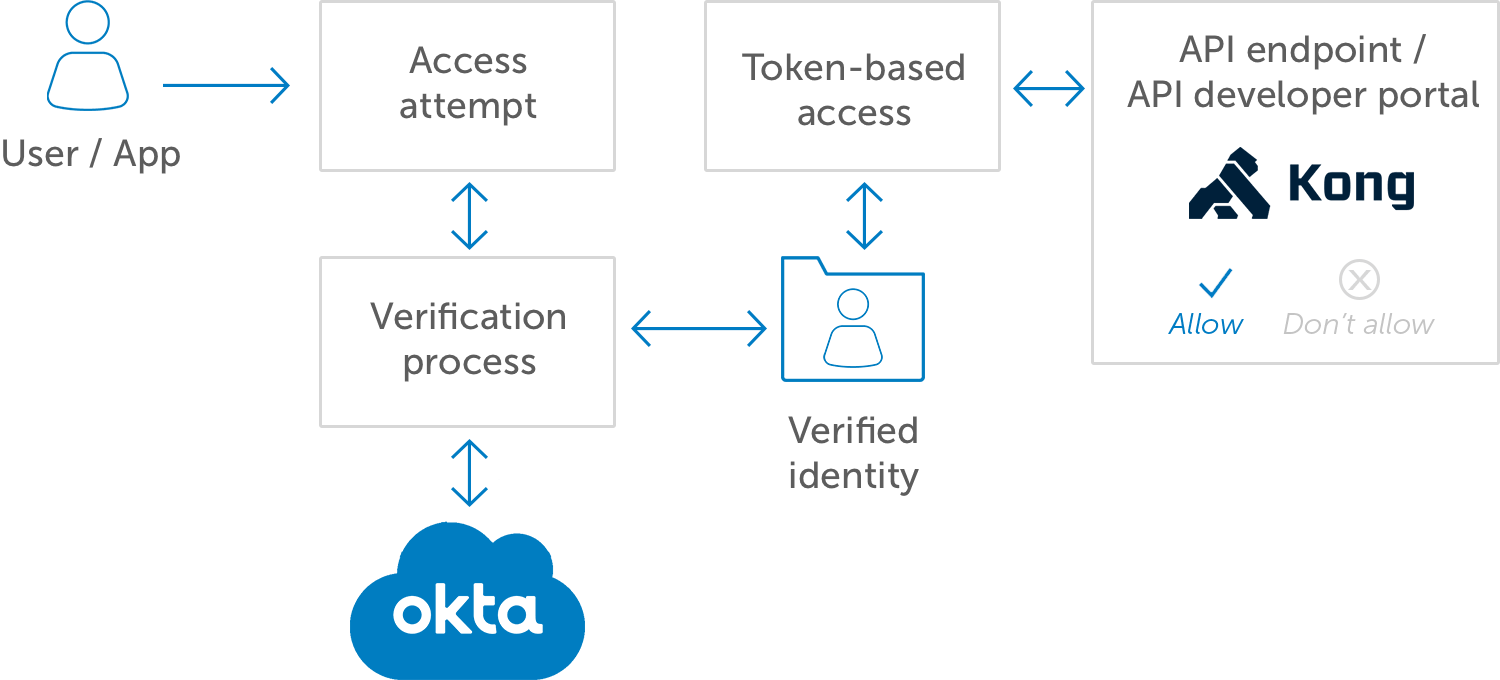
- Home
- Kong API Gateway
Integration detail
Kong API Gateway
Overview
Kong API Gateway integrates with Okta API Access Management (OAuth as a Service) to secure internal and external API traffic, in two different deployment scenarios: 1 - An authorization-tier integration, where authentication will be happening outside of Kong. A web application will handle authentication vs. Okta, acquiring an access token, and sending that access token to Kong on behalf of the end user. 2 - Kong itself handles authentication vs. Okta, and passes user info to upstream apps.
The Challenge
- API production and consumption is exploding, overburdening IT teams
- Microservices, partner integrations, and public APIs are driving this growth
- Securing all these APIs is harder – and more important – than ever
- Asking each engineering team to implement their own API security is wasteful and risky
The Solution
API consumers authenticate once through Okta, and receive an access token
Kong enforces token validity when consumers try consuming APIs
API consumers can easily access the APIs they’re authorized to access—and only those
Okta also secures the developer portal and Kong admin access


